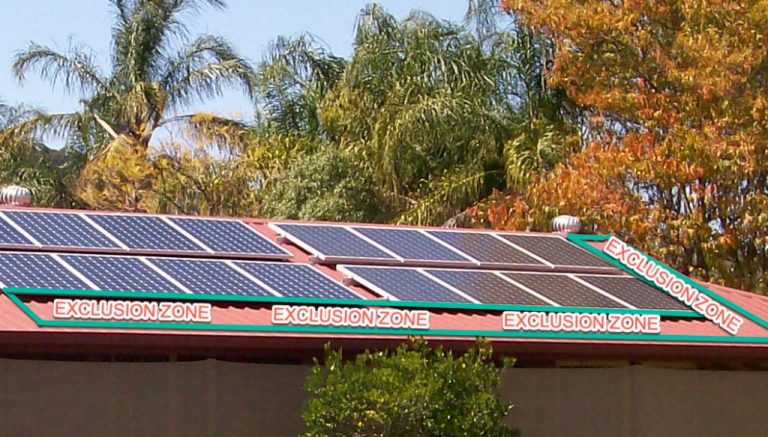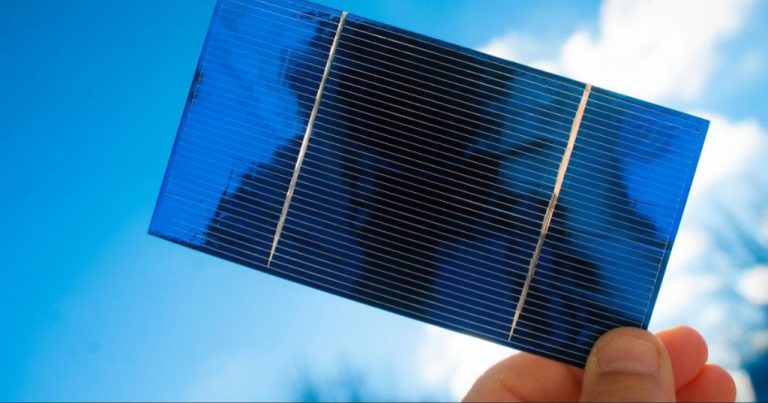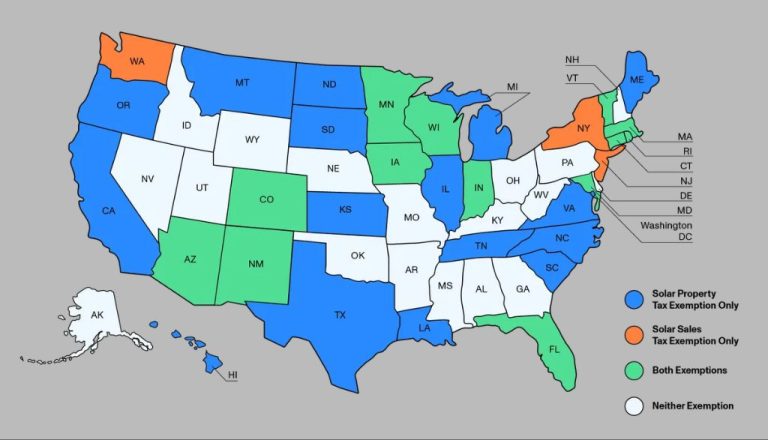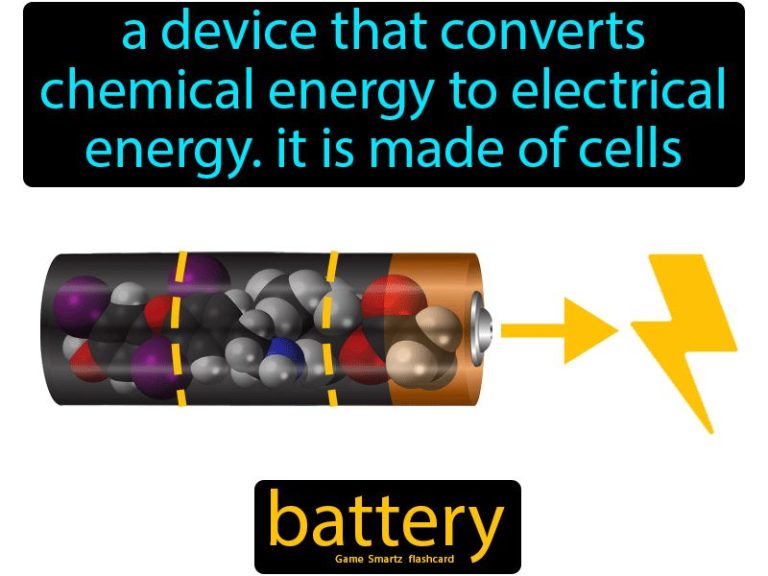How To Connect Two Solar Panels To One Battery Without Charge Controller?
The goal of connecting two solar panels to one battery without a charge controller is to create a simple, low-cost solar power system. Using multiple solar panels allows you to generate more power, while connecting them directly to the battery eliminates the need for an additional charge controller component.
However, there are risks and challenges involved with this type of setup. Without regulation from a charge controller, the solar panels can potentially overcharge the battery. This can damage the battery and cause excessive gassing or even an explosion hazard. The system needs to be carefully designed so the solar panels do not exceed the charging requirements of the battery. Monitoring battery voltage and temperature is critical.
Bypassing the charge controller also means losing out on key features like load control, lighting protection, and advanced charging algorithms. The system will require diligent maintenance and awareness of the state of charge to prevent issues. Overall, while connecting panels directly to batteries is possible, it requires an expert understanding of the implications.
Safety Concerns
Connecting solar panels directly to batteries without a charge controller poses several safety risks that should be carefully considered. The main concerns are overcharging batteries, mismatched system voltages, and reverse current flows.
Overcharging is one of the biggest risks of directly coupling solar panels and batteries. Without a charge controller to regulate voltage and current, batteries can easily become overcharged by the solar panels. This can lead to dangerous situations like overheating, bursting, leaking battery acid, or even explosion and fire [1]. Overcharging shortens battery lifespan and poses serious hazards.
Another issue is mismatches between solar panel and battery voltages. Most solar panels output over 20V, while lead-acid batteries need about 14V to charge properly. Connecting mismatched voltages can damage the battery or cause dangerous charge conditions. Proper battery charging requires voltage regulation that charge controllers provide [2].
Reverse current flow at night is another risk. Solar panels can act like a load at night, draining the battery. Charge controllers prevent this reverse current flow. Draining the battery too low damages it and can leave the system unusable.
Wiring Basics
There are two main ways to wire together multiple solar panels – in series or in parallel. Wiring panels in series connects the positive terminal of one panel to the negative terminal of the next panel, which increases the total voltage output of the system. Wiring the panels in parallel connects all the positive terminals together and all the negative terminals together, which increases the total current output.
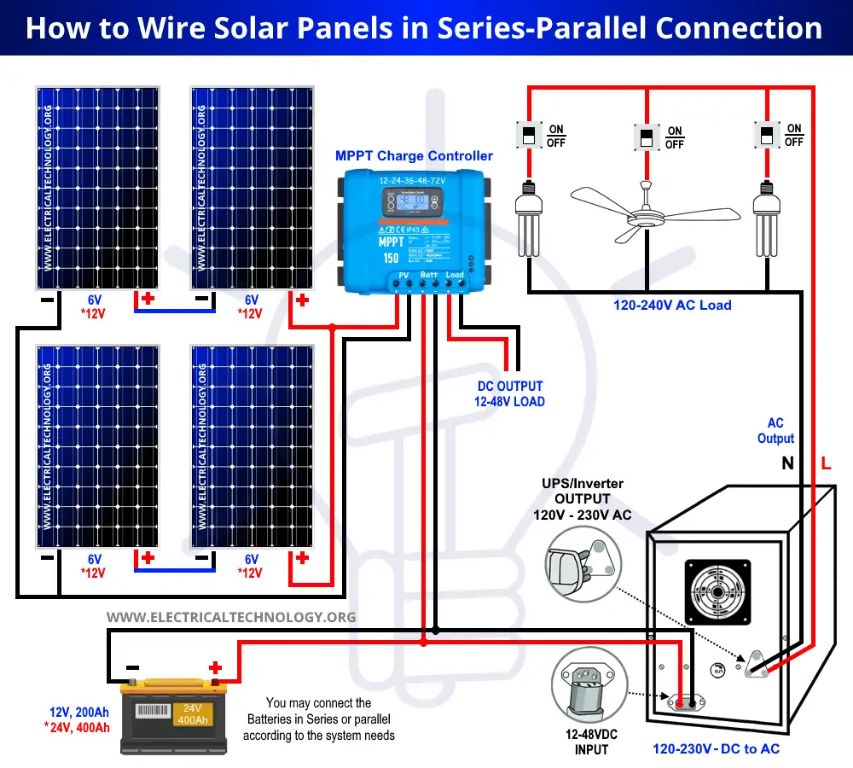
When wiring two solar panels to one battery without a charge controller, it is generally recommended to wire the panels in parallel rather than series. This is because wiring in series doubles the voltage, which can damage the battery if there is no charge controller to regulate the voltage. Wiring in parallel keeps the voltage the same as a single panel (typically around 18-22V), while doubling the current capacity. This allows the solar panels to charge the 12V battery more safely and efficiently.
To calculate the total voltage when wiring in series, simply add up the individual panel voltages together. For current, the total current will stay the same as a single panel’s current rating. When wiring in parallel, the voltage remains the same, while the currents add together. So two 100W, 18V panels wired in parallel would produce 18V but 200W total (Source). Understanding these basic calculations helps size the system appropriately.
Sizing the System
When connecting two solar panels to one battery without a charge controller, it’s crucial to ensure the system is properly sized to handle the power flow. The battery bank capacity must be large enough to be charged by the solar panels without overcharging. At the same time, the solar panels must supply sufficient wattage to meet your energy needs.
To calculate the required battery capacity, first determine your average daily power consumption in watt-hours (Wh). For example, if you use 500 watts of power over 10 hours per day, your consumption would be 5,000 Wh (500 x 10). It’s recommended to multiply this by 3-5 days to size your battery bank for periods of low sunlight https://solartown.com/.
Next, factor in the solar panel wattage. With no charge controller, the panel wattage should be substantially lower than the battery capacity to prevent overcharging. A reasonable rule of thumb is to size the solar panels at 20-30% of the battery bank capacity https://shopsolarkits.com/.
Undersizing the system risks draining the batteries too quickly while oversizing risks damage from overcharging. Careful calculations are needed to optimize the system sizing when directly connecting panels to batteries.
Charge Regulation Alternatives
There are a few alternatives to using a charge controller for regulating voltage from solar panels to batteries. However, these options come with some downsides compared to using a proper charge controller.
Blocking Diodes
A blocking diode can prevent reverse current flow from the battery back to the solar panel at night, which can drain the battery. However, blocking diodes don’t provide any active regulation of voltage or current going into the battery 1. This means overcharging and gassing of the battery is still possible without a charge controller.
Zener Diodes
A Zener diode can provide some basic overvoltage protection by breaking down and shorting excess voltage above a set level. But it does not actively adjust charging based on battery state, and the shorting can waste power as heat 2. Zener regulation is also not very precise.
Resistors
A resistor can limit current flow by dissipating power, but does not regulate voltage going to the battery. Resistors also waste power as heat. They are not an efficient or reliable method for preventing battery overcharging without a controller.
While these alternatives may seem like quick fixes, a charge controller provides active and efficient regulation tailored to the battery’s needs. Controllers prevent battery damage through over-discharge, over-voltage, under-voltage, and reverse current flow. They maximize charging efficiency. For safe, reliable, and optimal solar charging, a purpose-built charge controller is highly recommended.
Connecting the Components
Connecting solar panels directly to a battery without a charge controller is relatively straightforward, but it’s important to follow proper wiring methods to avoid safety hazards or damage to components. Here are the step-by-step instructions for wiring the system:
1. Make sure your solar panels and battery are compatible in terms of voltage and power output. For a 12V battery, use 12V or 24V solar panels wired in parallel. The solar array wattage should be about 1.5 times the battery amp hour rating.
2. Obtain the necessary cabling such as 10-gauge or thicker solar wire, alligator clips, terminal connectors, etc. Keep wire runs as short as possible.
3. Connect the positive (+) wire from the solar panel array to the positive terminal of the battery. Use proper crimped or soldered connectors.
4. Connect the negative (-) wire from the solar array to the negative terminal of the battery in the same manner.
5. Ensure all connections are secure, weatherproof, and electrically isolated to prevent shorts.
Here is a simple wiring diagram for connecting a solar panel to battery without a charge controller:
With this basic 2-component system, the solar panel will charge the battery when sunlight is available. But without regulation, the battery can become overcharged. Make sure to monitor voltage levels periodically.
For larger systems, multiple panels would be wired in parallel and connected to the battery bank as shown above. Just be sure to match voltage and capacity ratings between all components.
Installation and Operation
Proper installation and ongoing operation are critical when connecting solar panels directly to a battery without a charge controller. Here are some key considerations:
Mounting and Placement
Mount the solar panels in a location that receives full, unobstructed sunlight throughout the day (Source). Face the panels south if in the northern hemisphere or north if in the southern hemisphere to optimize exposure. Tilt the panels at an angle equal to your latitude for year-round solar collection. Keep the area around the panels clear of shade from buildings, trees or other obstructions.
Locate the battery bank in a cool, dry, ventilated area protected from extreme temperatures and moisture. Position it close to the solar panels to minimize voltage drop from wire runs. Refer to the battery manufacturer’s guidelines for proper installation and ventilation requirements.
Maintaining and Monitoring
Periodically inspect the panels and connections for damage, corrosion or loose wiring. Check that connections are clean and tight. Clear any accumulated dirt or debris off the panels; even a small amount of shading can significantly reduce output. Check the battery’s fluid levels and follow any other maintenance guidelines from the manufacturer (Source).
Monitor the battery bank voltage regularly, both at rest and under load. Ensure the battery is not chronically over or undercharged outside safe parameters. Check the specific gravity or state of charge periodically. Watch for signs of premature aging or capacity loss over time that may indicate issues with the unfettered solar charging. Make adjustments as needed to load, panel tilt or battery type/size to maintain proper operation.
Limitations and Risk Mitigation
While it is possible to connect solar panels directly to batteries in some cases, there are situations where using a charge controller is absolutely necessary (Loomsolar, 2023):
- If the solar panel’s voltage exceeds the battery’s voltage – This will damage the battery.
- When using multiple solar panels in parallel or series – This requires charge regulation to prevent overcharging.
- For sealed lead-acid or lithium batteries – These require voltage regulation within a narrow range.
- For systems over 50 watts – Large systems need charge regulation.
There are a few ways to prevent damage when connecting solar panels directly to batteries (Proesolar, 2022):
- Use a small 10-20 watt solar panel with a 12V battery – This limits the charging current.
- Only connect the solar panel for a few hours at a time – Then disconnect it to prevent overcharging.
- Frequently check the battery voltage – Disconnect if over ~14.4V to avoid damage.
- Use a charge controller whenever possible – Especially for larger systems or lithium batteries.
While directly connecting solar panels and batteries is possible in very small off-grid systems, charge controllers provide vital protection in most real-world applications. Using voltage regulation and blocking reverse current flow, charge controllers prevent battery damage and improve system performance and longevity.
Improving the System
While it is possible to connect two solar panels to one battery without a charge controller, adding a charge controller later on can help improve system performance and protect the battery from damage. Some recommendations for adding a charge controller later include:
Select an MPPT charge controller that can handle the total wattage of the solar panels. Victron and Renogy make models that can be added to existing systems like the Victron BlueSolar MPPT 150/70 and Renogy Wanderer 30A (https://roadslesstraveled.us/rv-solar-upgrade-with-go-power-and-renogy-easy-cheap/). Follow the instructions to properly wire the controller between the solar panels and battery.
Upgrade to a larger battery bank if needed to account for increased solar input. Adding more batteries increases storage capacity.
Consider adding a battery monitor like a Victron BMV-712 to track detailed stats on your battery bank (https://community.victronenergy.com/questions/190510/mppt-15070-solar-panel-upgrade-do-i-need-a-new-cha.html). This helps optimize system performance.
Other enhancements like upgrading the solar panels, adding wind or alternators as additional charging sources, installing a more efficient inverter, and wiring improvements can also boost the solar system over time.
Conclusion
In summary, connecting two solar panels directly to a battery without a charge controller can provide basic off-grid electricity, but it comes with risks. The key steps are:
- Ensure your solar panels and battery are properly matched in voltage and amperage capacity
- Connect the solar panels in parallel to increase current
- Wire the system correctly with adequate cable gauges and fuses
- Monitor battery voltage to avoid overcharging
- Use batteries designed for solar storage and deep cycling
However, running a solar system without regulation is not recommended for long term use. The battery could become overcharged and damaged without automatic regulation. The system is also inefficient since excess solar energy cannot be utilized without a charge controller. Consider adding at least a basic charge controller for improved performance and safety.
While directly connecting panels to a battery is low cost, it is better suited for small scale, temporary or backup applications. For a reliable everyday solar system, invest in proper charge regulation and carefully size all components to work efficiently together.

